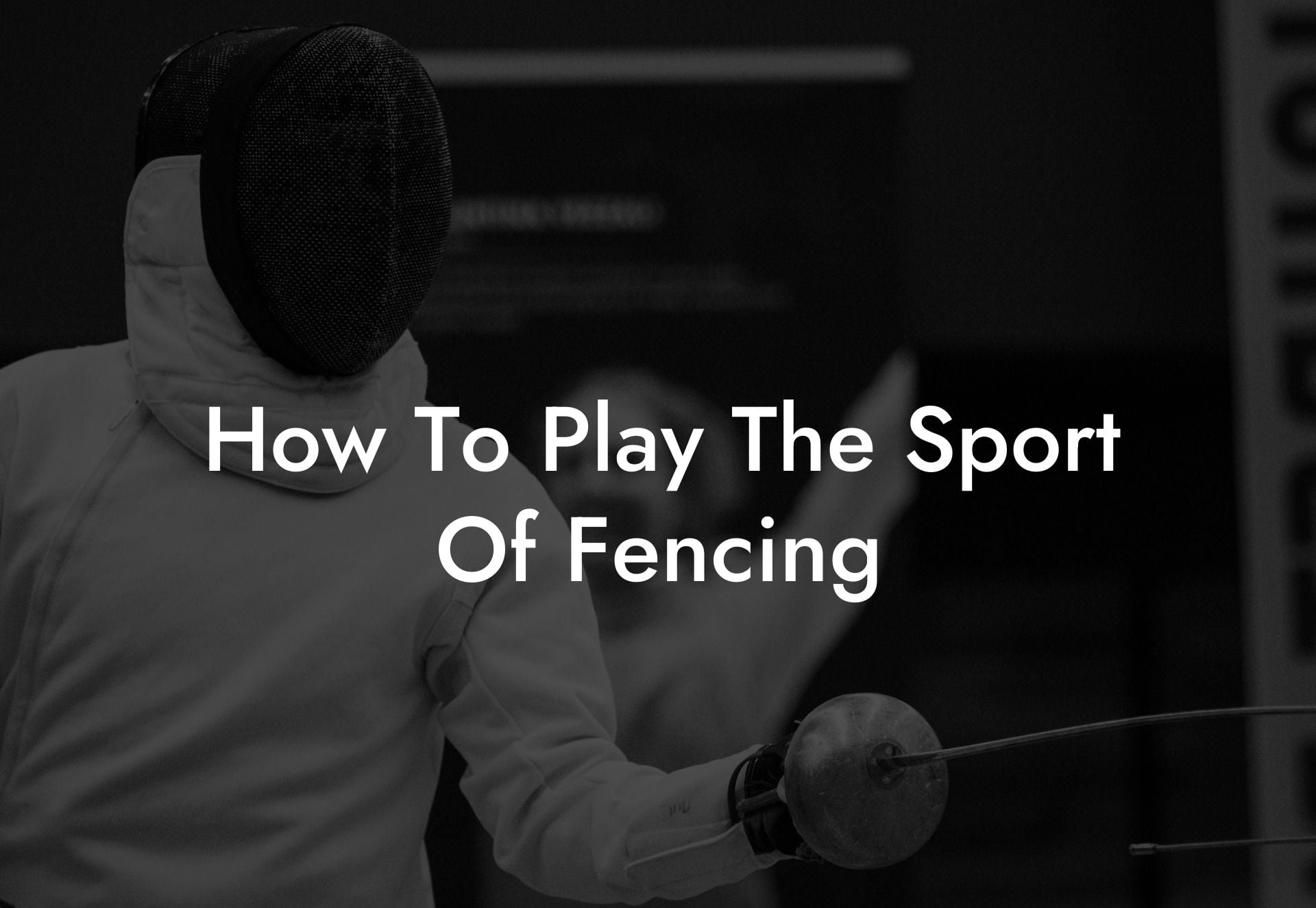Welcome to the exhilarating world of fencing! Have you ever been curious about how to play this age-old sport that combines physical dexterity, mental agility, and a touch of elegance? At Anchorage Fencing Club, we're here to guide you through the fundamentals of fencing, from understanding the rules and techniques to mastering your own personal style.
How To Play The Sport Of Fencing Table of Contents
The Three Types of Fencing
Before we dive into the how-to of fencing, it's essential to recognize the three primary disciplines: foil, epee, and sabre.
Foil
The foil is the most common weapon used in fencing. It has a flexible, lightweight blade and a small circular hand guard. The main objective in foil fencing is to score points by hitting your opponent's torso with your weapon.
Epee
Similar to the foil, the epee has a stiffer blade and a larger hand guard. However, in epee fencing, the entire body is considered a valid target, not just the torso. This can lead to a more cautious and strategic approach to the game as fencers must protect more areas.
Sabre
The sabre is a more aggressive weapon with a flat, curved blade. Sabre fencing also has unique targeting rules: fencers can score points by hitting anywhere above the waist, including the arms and head. This makes sabre fencing faster and more dynamic compared to foil and epee.
Basic Fencing Techniques
Now that you're familiar with the different types of fencing, it's time to learn the basic techniques. In all three weapons, similar principles and movements apply.
En Garde Stance
The foundation of any fencing position is the en garde stance. This stance is designed to allow maximum movement, balance, and control, while also presenting a small target to your opponent. Your dominant leg is in front with your feet shoulder-width apart, and your knees are bent.
Footwork
In fencing, footwork is key to maintaining the ideal distance between you and your opponent while also allowing you to launch attacks. There are two main footwork movements:
- Advance: a step forward with the front foot, followed by the back foot.
- Retreat: a step backward with the back foot, followed by the front foot.
Lunges
The lunge is an essential attack in fencing. To execute a lunge, extend your front leg and arm, thrusting your weapon towards your opponent's target area while your back leg remains stationary.
Parries
A parry is a defensive move aimed at blocking your opponent's attack. There are various parry techniques specific to each weapon, but the general principle is to deflect the incoming blade with your own weapon.
Fencing Rules and Scoring
The objective in fencing is to score points by hitting your opponent's target area. A bout is fought until one fencer reaches a certain number of points. In foil and sabre fencing, right of way rules apply, meaning only the attacker can score a point unless the defender makes a successful parry or causes the attacker to miss.
How To Play The Sport Of Fencing Example:
Two fencers are engaged in a foil bout. Fencer A initiates an attack with a lunge. Fencer B manages to successfully parry the lunge and riposte, hitting Fencer A in the torso. Fencer B is awarded a point.
Now that you're acquainted with the fundamentals of the sport, it's time to immerse yourself in the excitement and style of fencing. The road to mastering this artful sport might be challenging, but it's a rewarding and unique experience that few other sports can provide. If you found this guide useful, be sure to share it with friends and check out other articles on Anchorage Fencing Club for more information on fencing techniques, equipment, and clubs. As you embark upon your fencing journey, remember to stay engaged, nimble, and above all, have fun!













